Chiwen (Hornless-dragon mouth)
Legendary Creature on The Main Ridge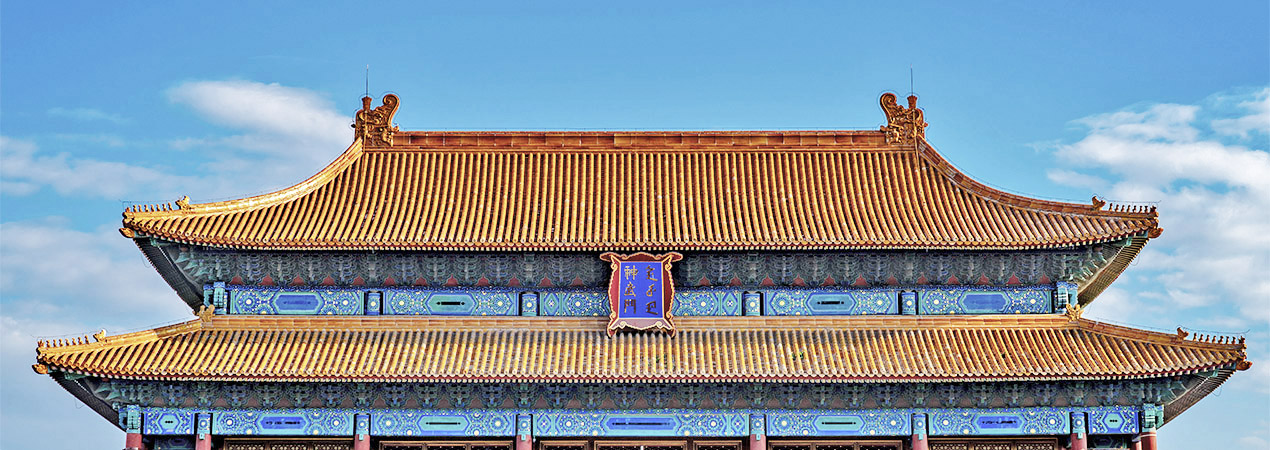
Have you ever noticed that there is a creature on the roof of ancient architecture in China? That is Chiwen (lit: Hornless-dragon mouth), and it is one of the 9 sons of the dragon in Chinese mythology. It is depicted in imperial roof decorations and other ornamental motifs in traditional Chinese architecture and art. If you look on the main ridge on the roof of Chinese architecture, at each end there is a fish-like hornless dragon, which was named Chiwei (鸱尾) in the Wei and Jin Dynasty (220-420CE), and alternatively written as Chiwen (鸱吻) in the Tang (618-907CE) and the Song Dynasty (960-1279CE), and Chiwen (螭吻) in the Ming (1368-1644CE) and the Qing Dynasty (1636-1912CE).
Why was Chiwen on the roof?
Chiwen firstly named Chiwei in the Jin Dynasty (266-420CE). Legend has it that a kind of fish in the sea has a tail to spray waves to cause rainfall. Chinese ancient architecture created wooden structures, so people needed to especially pay attention to fire protection. Therefore, the shape of the fish tail was placed on the roof ridges.
The joint of the ridge and eaves are often susceptible to leaking, so Chiwei works as a nail to reinforce the ridge of the roofs and protect the two ends and prevent rainfall leaking through.
How did the Chiwei change from the tail to the fish body?
Due to enlightened policy in the Tang Dynasty integrated exotic culture, Buddhism was introduced to China from India. The fish-like, dragon headed creature in Buddhism is the mount of a water deity. Chiwen hence borrows the image in Buddhism.

In the Song Dynasty, Chiwen continued in the same style, and in the Tang Dynasty it turned out to be slim and the “Qiang Tie (抢铁)” appeared on the tail. The thing was designed for prevention of birds sitting on Chiwen, with the original shape of the sword handle on the Chiwen in the Ming and Qing Dynasty. Until the South Song Dynasty, there were more forms of Chiwen.
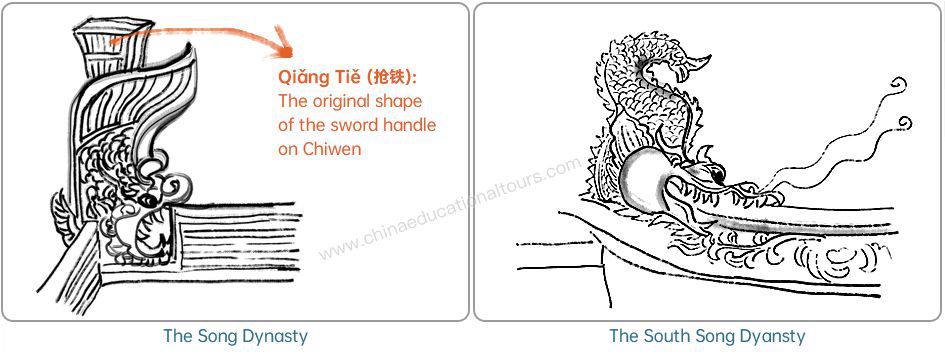
The Yuan Dynasty was an era ruled by the Mongolian ethnic minority, and a small creature was added on the back of the Chiwen.
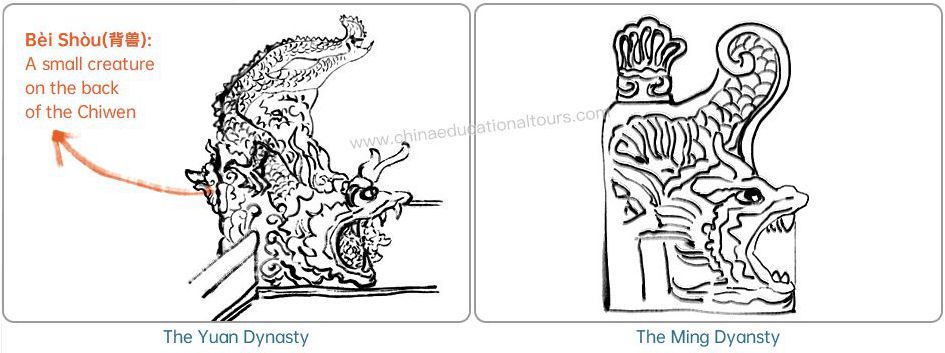
During the Ming and Qing Dynasty, influenced by centralization of imperial power, all decorations in the imperial palace are dragons, so the “Chiwen” (鸱吻) changed to “chi wen” (螭吻), as Chi (螭) means hornless dragon, one of the nine sons of the dragon.
Civilian residences are usually adorned with tiles and pottery shards, while temples, officials’ houses, and palaces are ornamented with glazed tiles. The most luxurious and beautiful one is on the roof of the Hall of Supreme Harmony in the Palace Museum.
Let’s review the development of Chiwen, so you can tell which of the ancient buildings were built in which dynasties or copy which dynasties by the shape of Chiwen.
The Sui and the Tang Dynasty: Chiwei were widely used on the roof of buildings, shaped as a fish-like, dragon headed creature
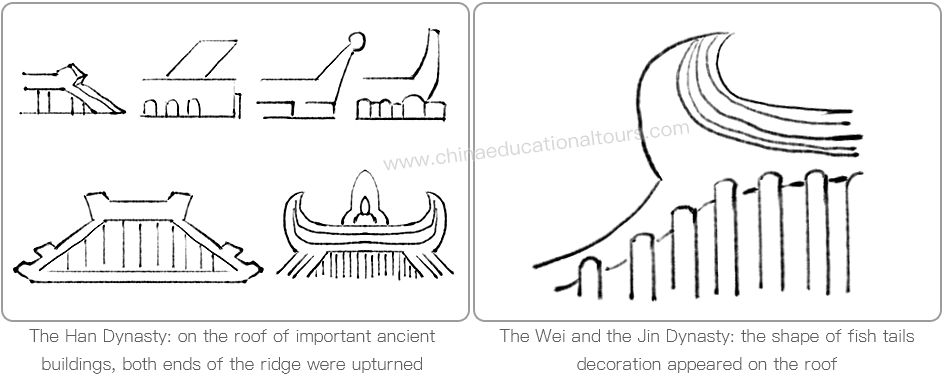
During the Song Dynasty: the shape of Chiwei turned to slim
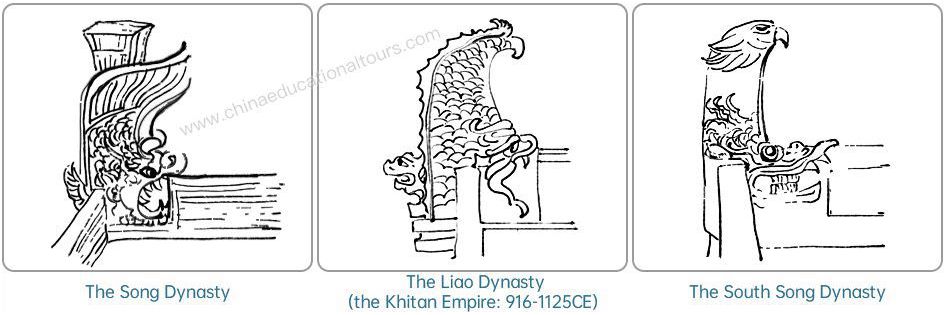
The Yuan Dynasty: added a small creature on the back
The Ming and the Qing Dynasty: the tails were bent reversely

We do know that before the Ming and the Qing Dynasty, the tail of Chiwen bent inward, and it turned to a reverse S-shape during the Ming and the Qing Dynasty.
There is a hint to distinguish which ones were built in the Ming or built in the Qing Dynasty:
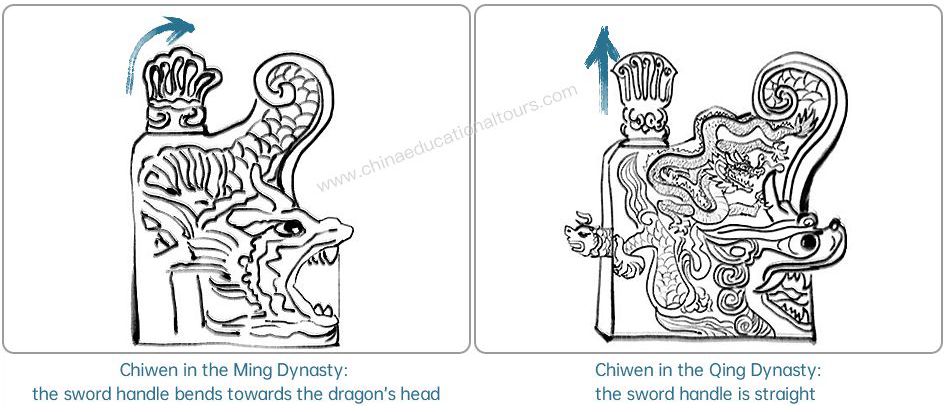
In this pair of Chiwen creatures on the roof you can see from the tails without a head to the hornless dragons that they are always placed on the top point of ancient architecture.

OR
Are you eager to begin your Chinese cultural journey?
Drop us a line and we will promptly connect you with our leading China expert!
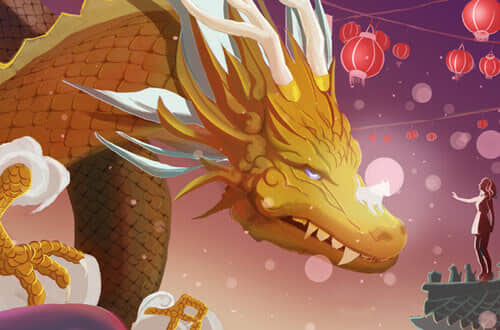 Dragon in Chinese Mythology
Dragon in Chinese Mythology  Dragon Worship in China
Dragon Worship in China 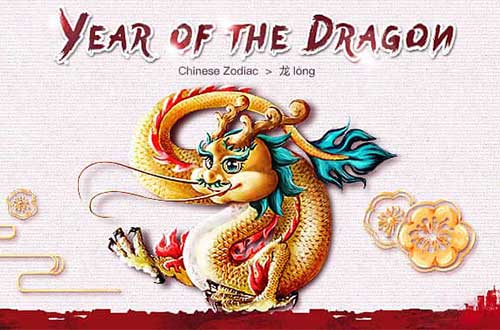 Year of the Dragon - Zodiac Sign 2024
Year of the Dragon - Zodiac Sign 2024 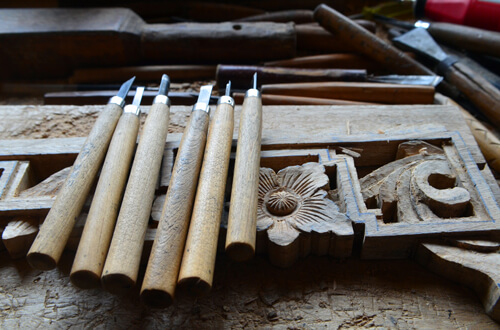 Chinese Woodcarving Art
Chinese Woodcarving Art